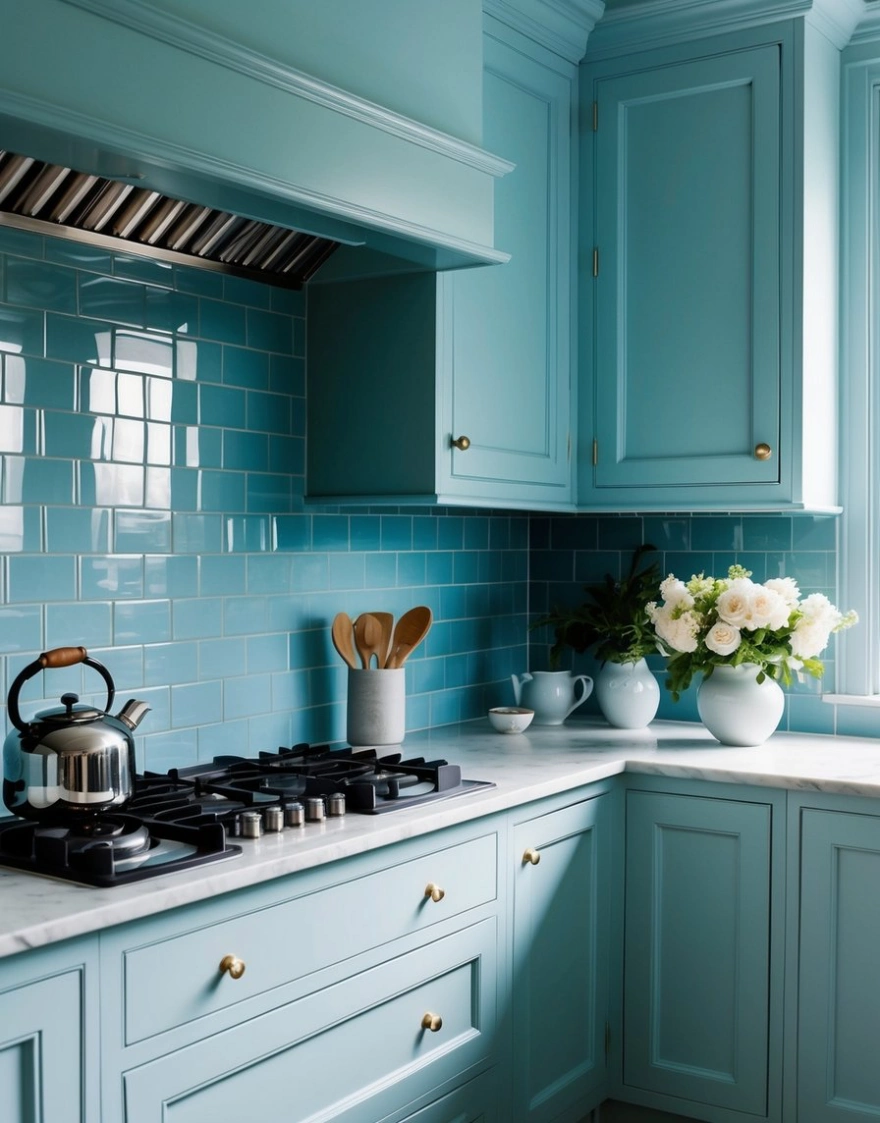
Choosing the perfect kitchen wall tiles can transform your culinary space from drab to fab. With countless options available, it’s easy to feel overwhelmed. But fear not, this guide will help you select the ideal kitchen wall tiles, considering factors such as durability, ease of cleaning, colour scheme, and overall style.
When browsing tiles, think about the atmosphere you want to create. Do you fancy a sleek modern look or a cosy rustic vibe? Your choice of tiles can significantly impact the room’s ambience. Remember to coordinate with your existing decor, including cabinets, countertops, and appliances.
Don’t forget about practicality. Kitchen walls are prone to splashes and spills, so opt for tiles that are easy to clean and maintain. Porcelain and ceramic tiles are popular choices due to their durability and wide range of designs. With these tips in mind, you’ll be well on your way to creating a stunning kitchen that reflects your personal style.
Understanding Tile Materials
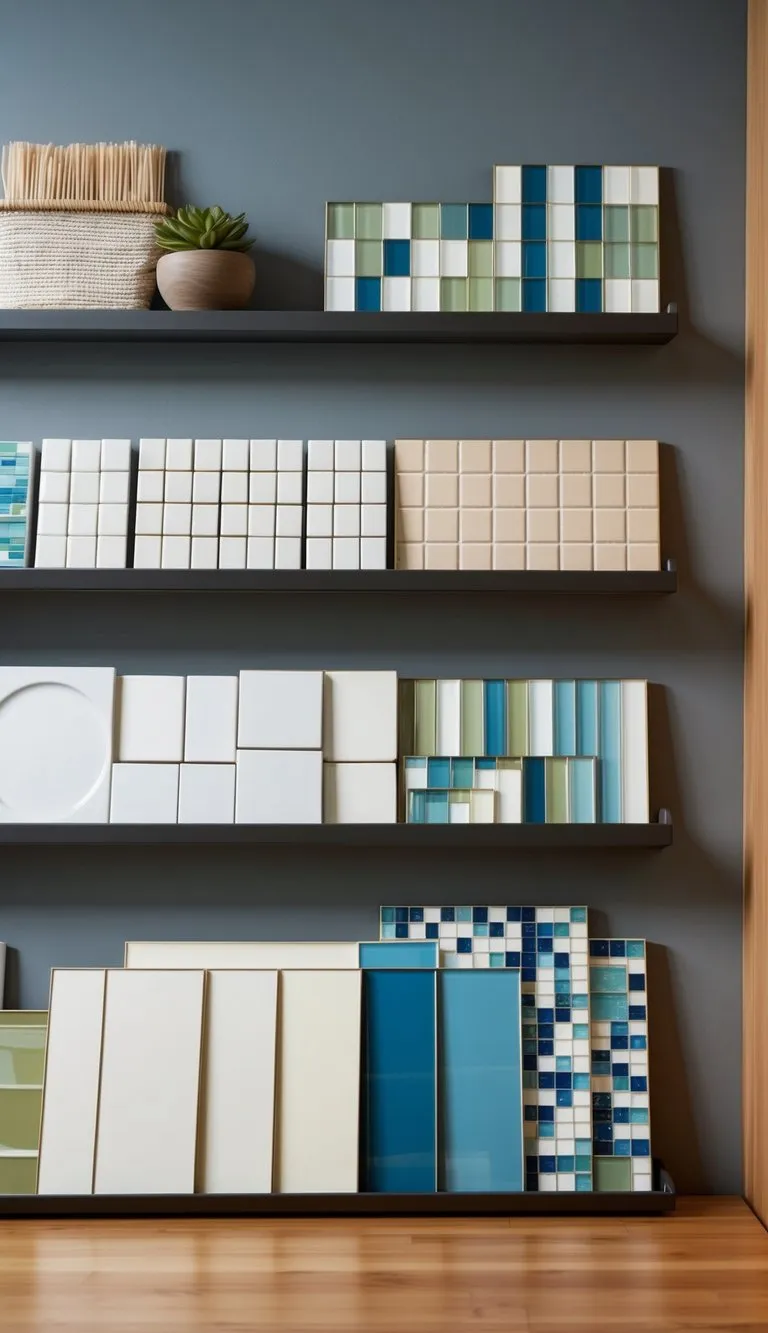
When selecting kitchen wall tiles, it’s crucial to grasp the characteristics of different materials. Each type offers unique aesthetic and functional qualities that can significantly impact your kitchen’s look and performance.
For some inspiration, read our feature on 15 kitchen wall tile ideas for your kitchen.
Ceramic and Porcelain Tiles
Ceramic and porcelain tiles are popular choices for kitchen walls. Ceramic tiles are affordable and easy to clean, making them ideal for busy kitchens. They come in a wide range of colours and patterns, allowing you to express your style.
Porcelain tiles, a denser variant of ceramic, offer superior durability and moisture resistance. This makes them excellent for high-humidity areas in your kitchen. Both ceramic and porcelain tiles are low-maintenance options, requiring minimal upkeep to retain their appearance.
When choosing between ceramic and porcelain, consider:
- Your budget
- The level of moisture in your kitchen
- The amount of foot traffic (if using on floors as well)
- The desired aesthetic
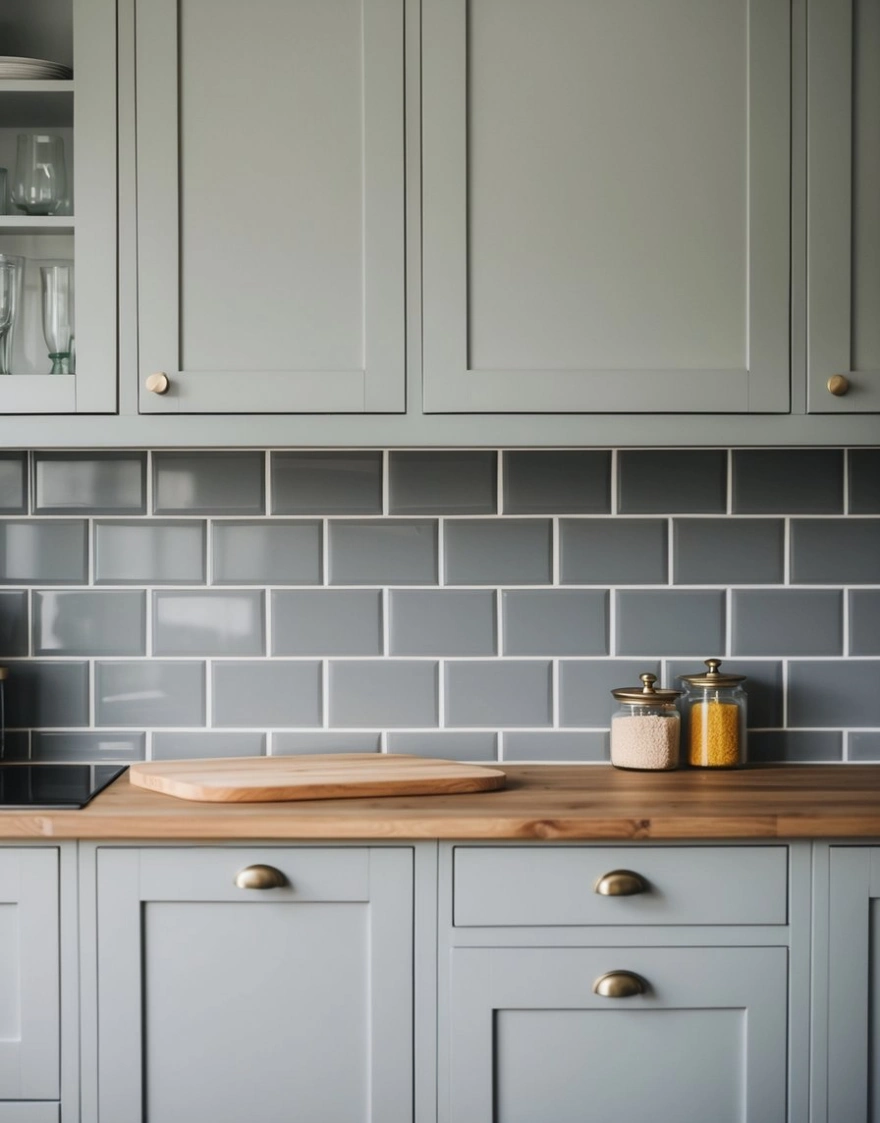
Glass Tiles
Glass tiles can add a touch of elegance and modernity to your kitchen walls. They reflect light beautifully, making your space appear brighter and more spacious. Glass tiles are non-porous, resistant to stains, and easy to clean, making them practical for kitchen use.
You’ll find glass tiles in various colours, shapes, and finishes, from glossy to frosted. They can create stunning feature walls or eye-catching splashbacks. However, keep in mind that glass tiles can be more expensive than ceramic options and may require professional installation.
Consider these factors when opting for glass tiles:
- Light reflection and space enhancement
- Desired colour scheme and aesthetics
- Installation complexity
- Budget constraints
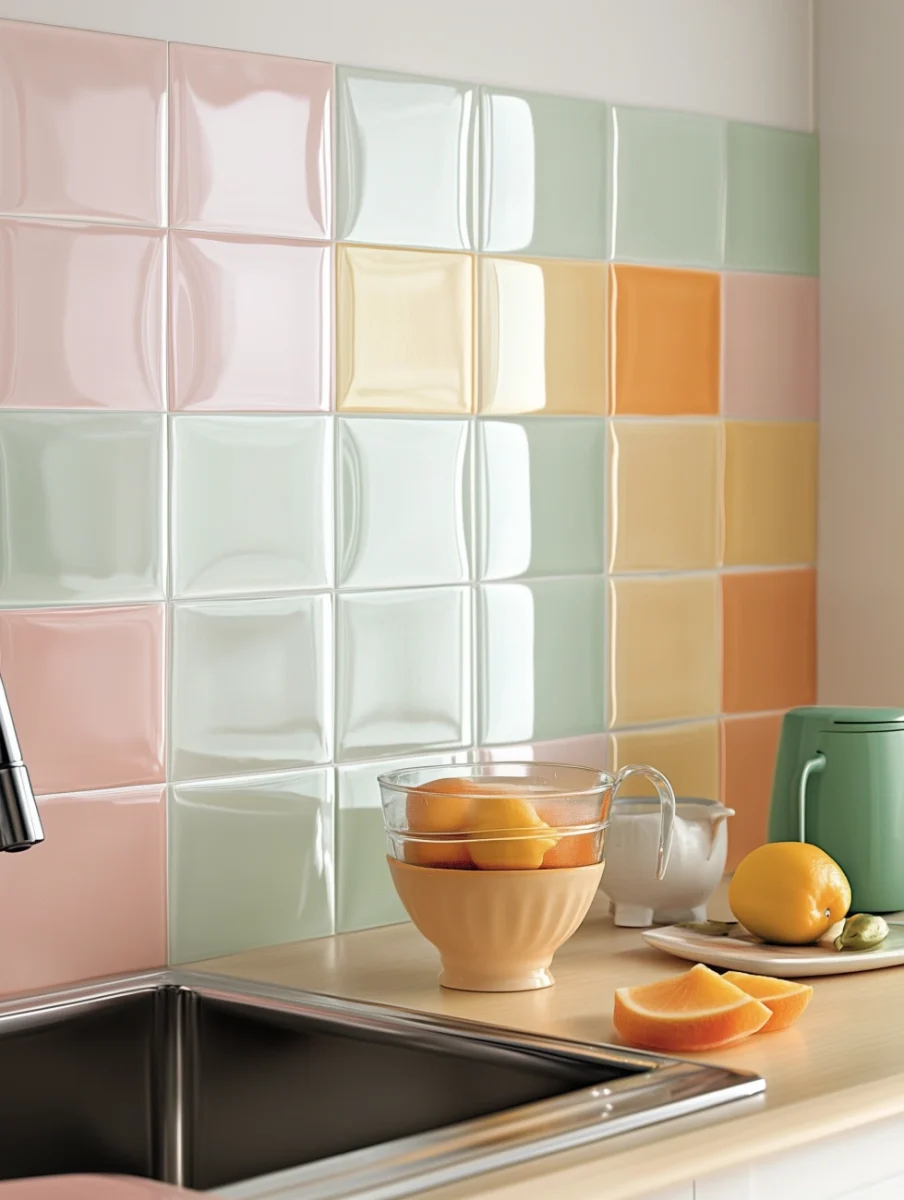
Natural Stone Tiles
Natural stone tiles bring a unique, organic beauty to your kitchen walls. Options like marble, granite, and slate offer distinct textures and patterns that can elevate your kitchen’s aesthetics. Each piece of natural stone is unique, ensuring your kitchen has a one-of-a-kind look.
However, natural stone requires more maintenance than other tile materials. Most types need regular sealing to prevent staining and moisture absorption. They can also be more expensive than ceramic or porcelain options.
When considering natural stone tiles, think about:
- The overall style of your kitchen
- Maintenance requirements
- Colour and pattern variations
- Your budget for materials and installation
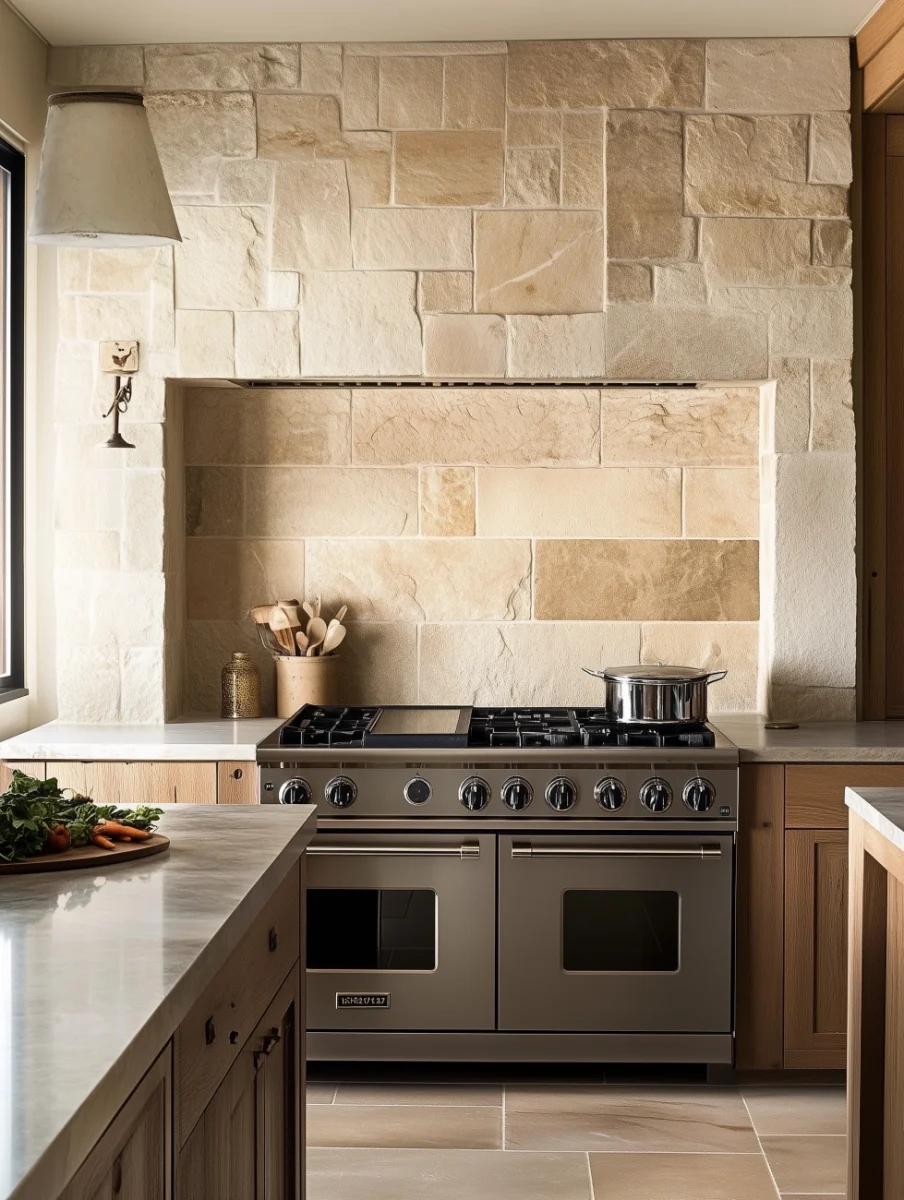
Mosaic Tiles
Mosaic tiles offer endless possibilities for creating intricate patterns and designs on your kitchen walls. These small tiles, typically made from glass, ceramic, or natural stone, can be arranged in various ways to achieve unique looks.
Mosaic tiles can be used to create stunning feature walls or splashbacks. They’re excellent for adding texture and visual interest to your kitchen. However, the small size of mosaic tiles means more grout lines, which can require extra cleaning effort.

When selecting mosaic tiles, consider:
- The overall design scheme of your kitchen
- The complexity of installation
- Cleaning and maintenance requirements
- The impact on your budget
Design Considerations
Selecting the perfect kitchen wall tiles involves careful consideration of aesthetics and practicality. The right choices can transform your space, creating a harmonious and functional kitchen environment.
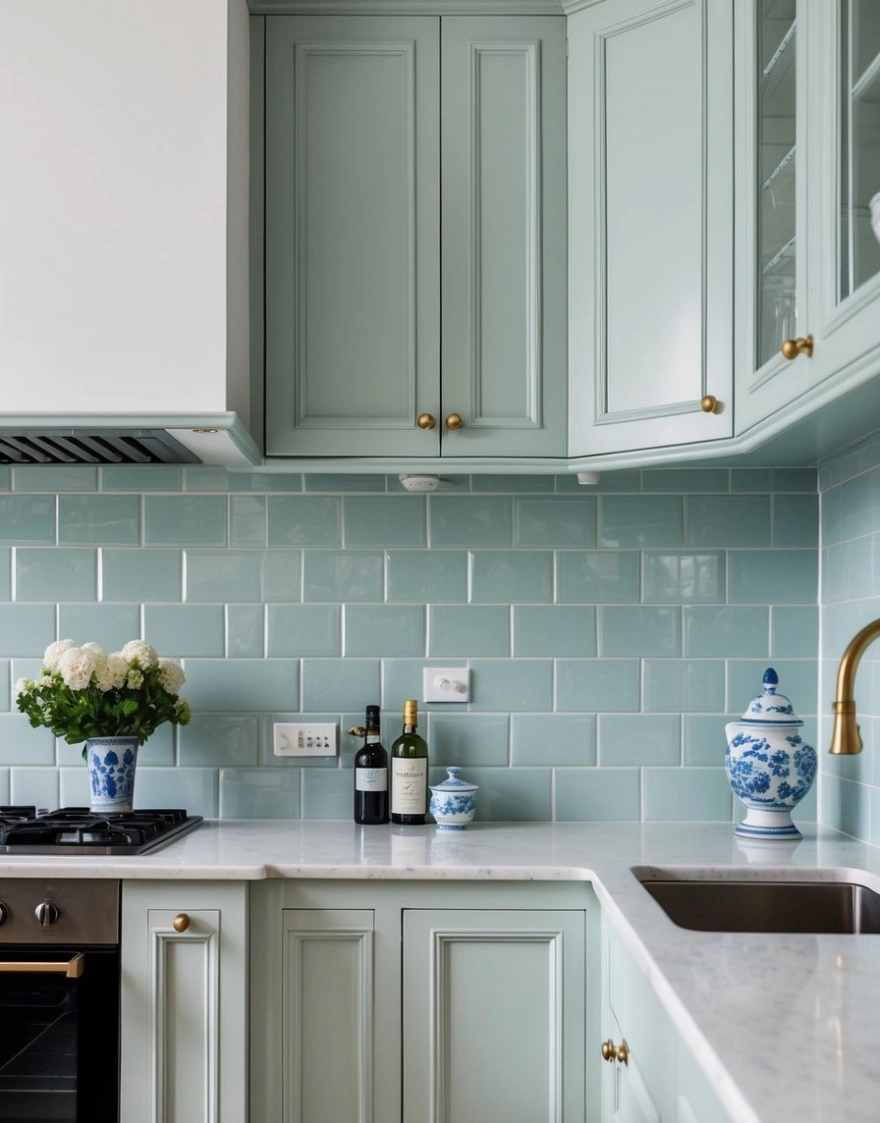
Colour and Pattern
Colour and pattern choices significantly impact your kitchen’s ambiance. Light colours can make small kitchen spaces appear larger, whilst darker hues add depth and sophistication. Consider your kitchen’s overall colour scheme and choose tiles that complement or contrast effectively.
Patterns can add visual interest. Subtle patterns work well in busy kitchens, while bold designs can become focal points. You might opt for:
- Classic subway tiles for a timeless look
- Moroccan-inspired patterns for exotic flair
- Geometric shapes for a modern aesthetic
Remember to take home samples to see how they look in your kitchen’s lighting and alongside other elements.
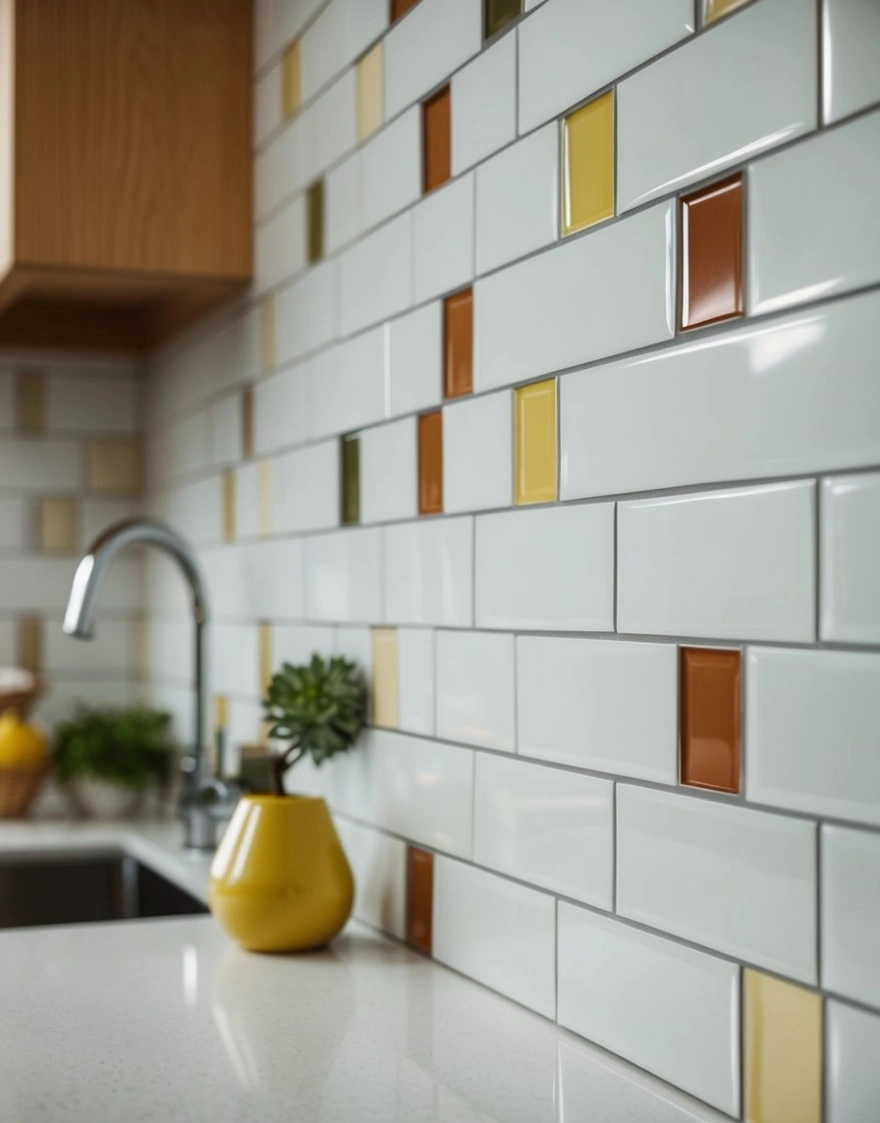
Size and Shape
The size and shape of your tiles can dramatically alter the perception of your kitchen space. Large format tiles can make a small kitchen feel more spacious, whilst smaller tiles allow for intricate designs.
Popular shapes include:
- Square: Versatile and classic
- Rectangle: Can be laid in various patterns like herringbone
- Hexagon: Adds a contemporary touch
Interesting shapes like fish-scale can create unique visual effects. Consider the proportions of your kitchen when selecting tile sizes. Larger tiles might overwhelm a small space, while tiny tiles could look busy in a vast area.
Texture and Finish
Texture and finish play crucial roles in both aesthetics and functionality. Glossy tiles reflect light, brightening your kitchen, but they can show water spots more easily. Matte finishes are excellent at hiding smudges and are less slippery when wet.
Textured tiles add depth and interest to your walls. Options include:
- Embossed patterns for subtle dimension
- Rustic finishes for a natural look
- 3D tiles for dramatic effect
Consider how the texture will impact cleaning. Heavily textured tiles might require more effort to maintain, whilst smooth surfaces are easier to wipe down.
Grout Selection
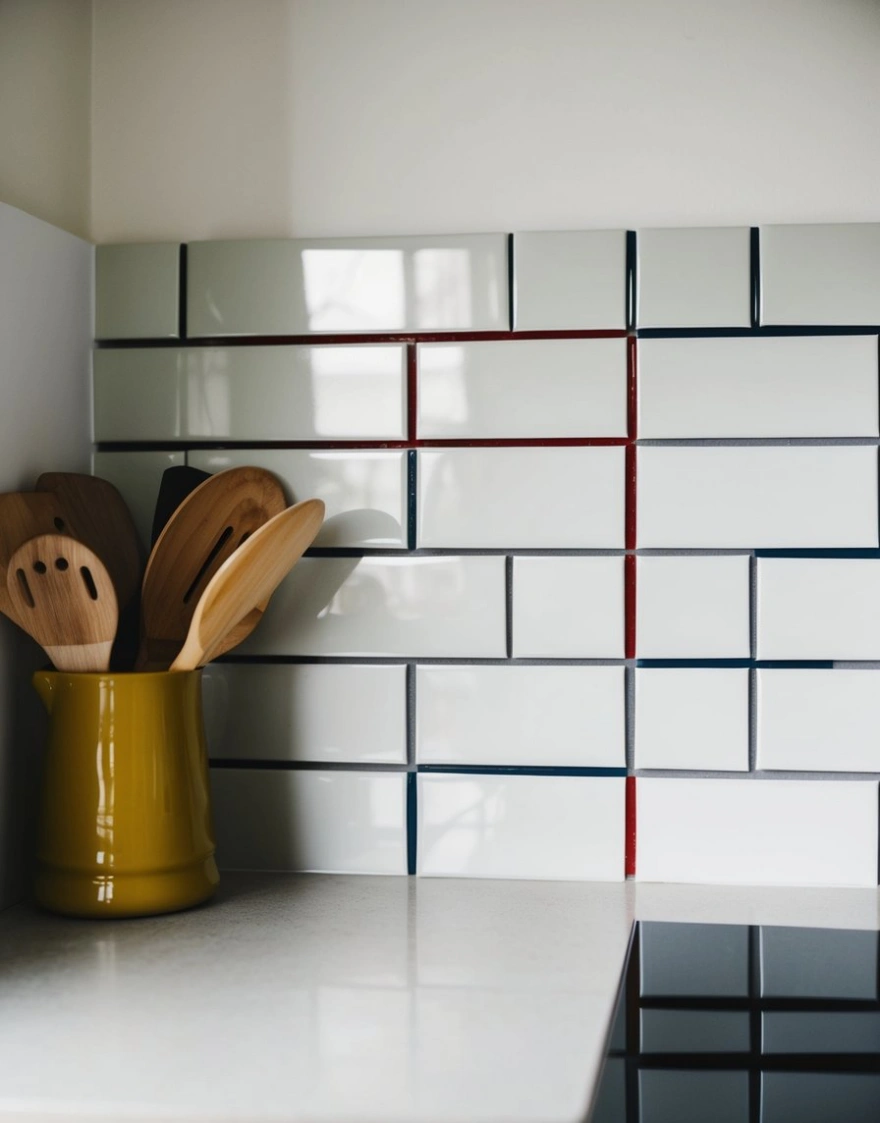
Grout colour and width can significantly affect your tile design. Light grout with dark tiles creates a striking contrast, while matching grout colours create a seamless look. Wide grout lines add a rustic feel, whilst thin lines appear more modern.
Consider these factors:
- Stain resistance for areas prone to splashes
- Colour fastness to maintain appearance over time
- Flexibility to prevent cracking
Epoxy grouts offer excellent stain and water resistance, making them ideal for kitchen environments. However, they can be more challenging to apply than traditional cement-based grouts.
